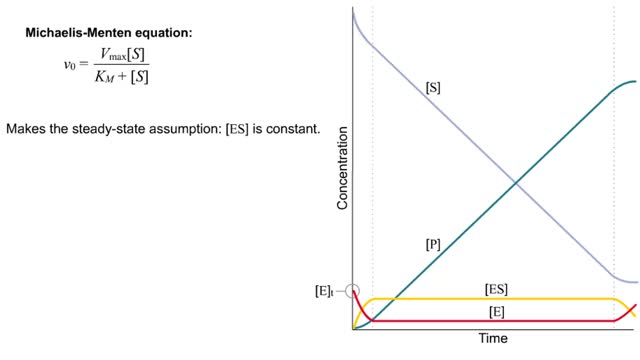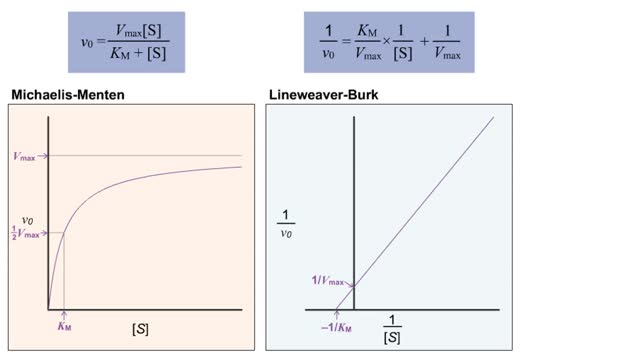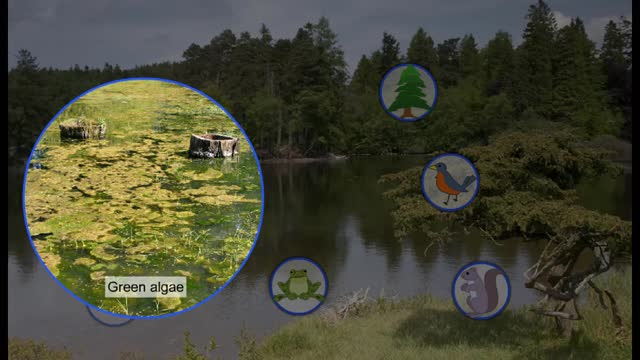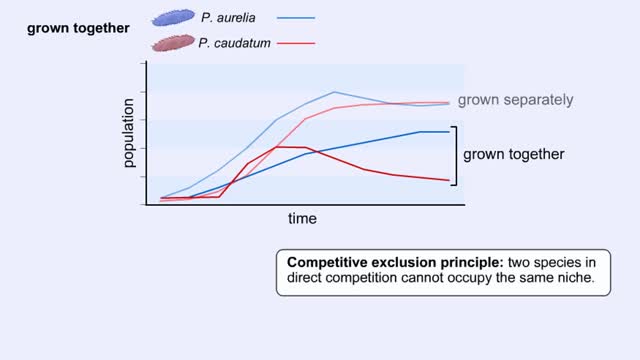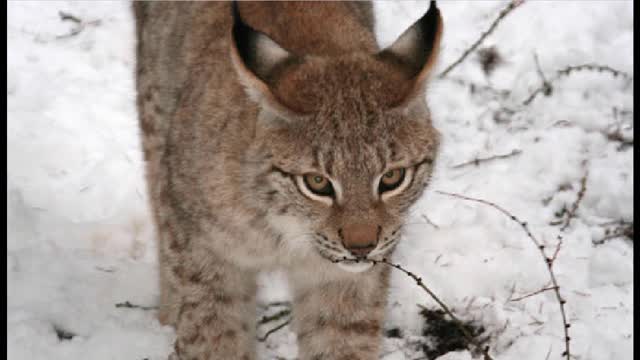Search Results
Results for: 'El'
By: HWC, Views: 10391
S P Substrate in great excess ([S] -- [E]) (More correctly [S] -- KM, but more on this later) Zero order rate equation: v = k where k is the zero-order rate constant (with respect to substrate). (More correctly [S] -- KM, but more on this later) Substrate forms complex with enzyme. ...
Michaelis–Menten equation & Kinetic parameters
By: HWC, Views: 10756
The Michaelis–Menten equation is the rate equation for a one-substrate enzyme-catalyzed reaction. This equation relates the initial reaction rate (v0), the maximum reaction rate (Vmax), and the initial substrate concentration [S] through the Michaelis constant KM—a measure of the substrat...
Kinetic parameters & Kinetic experiment
By: HWC, Views: 10759
Kinetics is a measure of the speed or rate of a chemical reaction. A study of kinetics allows us to determine which variables to control (temperature, reactants, catalysts) and how to vary them in order to maximize the amount of products formed and minimize the time involved. Vmax = maximum ve...
Virtual Enzyme Kinetics & Lineweaver Burk Plot
By: HWC, Views: 10525
• The double-reciprocal (also known as the Lineweaver-Burk) plot is created by plotting the inverse initial velocity (1/V0) as a function of the inverse of the substrate concentration (1/[S]). • This plot is a useful way to determined different inhibitors such as competitive, uncompetitive...
Global warming and its effect on climate change
By: HWC, Views: 10522
Global warming, habitat destruction, and pollution are all hot topics in the news. Environmentalists are concerned that many of these factors will lead to the loss of species. But how will this happen? One way to think about the environment is as a finely-tuned, high performance engine. If one...
Interspecific Competition Relationship - Competitive & Niche Differentiation
By: HWC, Views: 10655
In an environment with limited resources, any organisms that utilize the same resources will be in competition with each other. For example, let's look at two competing species of paramecium, a single-celled organism that feeds on bacteria. If we raise each of these species in isolation, both...
Predator- prey competition and symbiosis
By: HWC, Views: 10724
Predator-prey relationships occur when one species, the predator, kills and eats an organism of another species, the prey. This graph shows the cyclical nature of predator-prey relationships, in this case among populations of Canada lynx and snowshoe rabbits. If predation is without some li...
Energy Flow - Trophic Levels and Food
By: HWC, Views: 10549
All of these relationships between different species are founded on one thing: energy. Organisms get food in order to get energy, which is used by the organism for growth, maintaining health, and reproduction. We can classify the members of a community according to how they obtain food. Produc...
What Are Carbohydrates? Importance of Carbs & High Carb Food
By: HWC, Views: 11063
We hear a lot about carbohydrates in the news. Everybody seems to be on a low-carb diet. The news media often has stories on this diet fad, and companies are busy producing products with reduced carbohydrates. What's this fascination with carbohydrates? In a word: "Diet." The fact is that carb...
Advertisement




